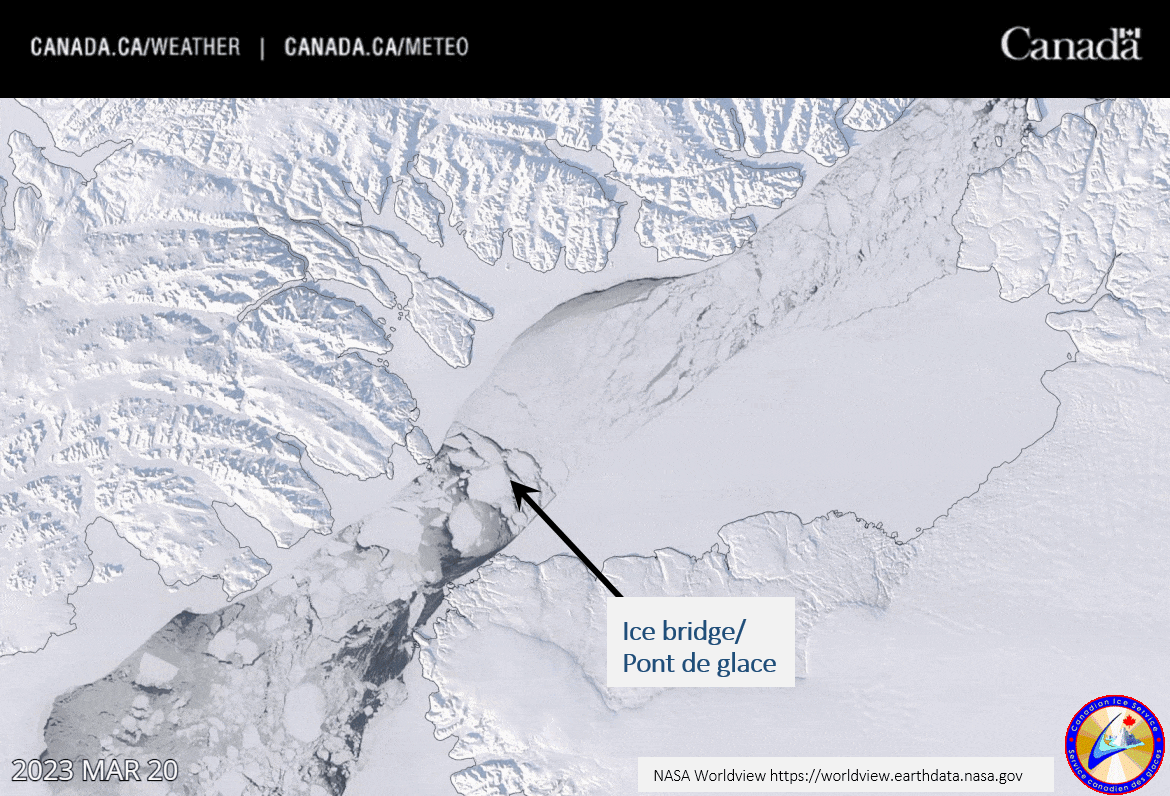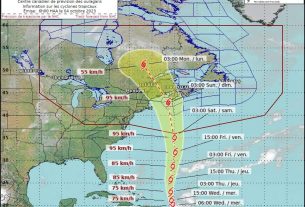**** Info via Environment Canada
Arctic sea ice cover
Each year, the Arctic sea ice reaches its maximum extent during the month of March. This is when the ice cover is at its maximum in the Northern Hemisphere.
According to the Copernicus Climate Change Service, the 2023 maximum was reached in early March and was 4% below the 1991-2020 average for the month. It was also the fourth lowest since satellite observations began. The Labrador Sea in Canada also had below-normal ice concentrations along its ice edge for most of March, and this trend continues well into April.
This map above from the Canadian Ice Service shows the ice conditions observed on April 10, 2023, compared to the average of that same date observed over a 30-year period between 1991 and 2020. The red shows that it is much below average. The satellite image shows the ice concentration in the Labrador Sea on April 11. Credit: European Union, Copernicus Sentinel-3 imagery.
Further south, March saw much less ice than usual on the East Coast and the Great Lakes. Only 5-10% of the regions were covered in ice, well below the normal amount for that time of year.
Weekly % of ice coverage (in blue) over the Great Lakes between December 2022 and April 2023. The green line shows the average based on the past 30 years. Source: Canadian Ice Service.
After not forming at all in 2022, the Nares Strait ice bridge formed again this year. This ice bridge between Greenland and Canada’s Ellesmere Island is an important feature of the Arctic as it prevents sea ice from exiting the Arctic Ocean and drifting southward. Since it formed later than normal this year, more sea ice, particularly old ice, is present in Baffin Bay, and traces of this old ice are as far south as Bonavista, Newfoundland. Old ice is the thickest and more dangerous type of sea ice because of its purity and hardness.

Arctic sea ice is an important part of our planet’s climate system. It acts as a reflective surface that helps to cool the Earth by reflecting sunlight back into space. This is why monitoring the Arctic sea ice extent helps us better understand our planet’s climate and weather patterns.
For the latest ice conditions, visit the Canadian Ice Service Web page.




